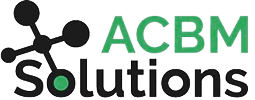3 Signs It’s Time to Redesign Your Chart of Accounts
Restructuring and streamlining your COA may not be at the top of your “to do” list. But perhaps it should be. The fact is that when you wait for chart of accounts problems to become completely unmanageable, it’s already impacting your business in substantial ways. It’s better to look for the early warning signs that your organization is outgrowing its old COA.
The good news is that your next major COA remediation project can be the last. While you will still have to revisit and make updates, a properly designed COA will grow and flex with your business.
Now, let’s look at some of the signs that your chart of accounts needs serious attention.
Red Flag #1: Reporting Is Inflexible and Insights are Inaccessible or Inconsistent
Financial reporting issues are easy to spot because many CFOs, Finance Directors, and Controllers have been faced with these scenarios:
- Executives and managers ask to see specific reports that deliver insights they will use in decision making - and you can’t get them what they need.
- Even worse, you might come up with different answers based on different groups using varying definitions to calculate the same lines in a report.
- When you ask IT for help in building these reports, the request gets waitlisted indefinitely. Or, the tech team gets on the job immediately and it still takes days or weeks to get the reports.
The same thing happens the next time…and the next. You are spending more time chasing data and reporting than helping the company move forward financially. An outdated and disorganized COA defies your efforts to slice and dice data effectively to get the desired business view.
Additional Reporting Issues:
Changes Are Hard Due to Inflexibility
The reports can’t accommodate new products, services, departments, divisions, acquisitions, or other changes in business structure related to growth and expansion. That’s bad news when you have a growing company!
Excessive Time Is Spent Compiling Data
Collecting and compiling data is taking more time than actually analyzing it. The data is simply not organized in a way that makes it accessible. This not only makes it difficult to wrangle, it also increases the risk of entry errors.
Multiple COAs and Non-Standard Implementations Exist
Organizations that have more than one ERP system instance and multiple COAs face significant challenges with consolidating even the most basic financial results. Performing analysis is extremely difficult, and comparing reporting “apples to apples” is impossible.
Even Basic Reporting Is Difficult
Nine times out of ten, analysts should be able to generate their own reporting without help from IT. That’s the ideal, but the reality often looks very different. Often, users end up turning to the development team or outside support to get even simple reports created.
Want an easier way to get reporting done for your JD Edwards ERP? Once your COA is in good shape, Cetova BI dashboards and reporting add massive value.
Red Flag #2: Users Are Spending Too Much Time on Manual Tasks
Accounting teams are good at figuring out workarounds to get their jobs done. That’s a great trait to have, but it isn’t a sustainable way to solve the COA problem.
Example 1: If your team is extracting data from the ERP into Excel to classify items line by line, this is a warning sign. Your department is spending far too much time on manually classifying line items. Even more troubling, your data integrity comes into question since you are effectively making Excel your system of record.
Example 2: If your team is spending more time collecting and compiling data than they do analyzing it, there’s something wrong. Not only is this eating into productivity, it’s preventing your team from developing professionally. You want your people to be making the best use of their time. A properly designed COA automatically categorizes inputs, eliminating the need for an additional data warehouse or spreadsheets.
The Short Version: If closing the books is taking more than 5 days per month, that’s a sign there’s something wrong with the practical usability of your COA.
Red Flag #3: You Are Headed for a Growth Phase
Growth is a good thing for revenue. But if your COA is already struggling to keep up with the complexity of your existing business, it’s bad news for staying on top of your general ledger and financial reporting. The sense of unease you feel at the idea of an acquisition or expansion into a new geographic region is justified. That may be all it takes to highlight what’s broken in your current system in a way that can’t be ignored any more.
It’s smart to get ahead of the chaos of growth by fixing your chart of accounts now. An expertly designed COA can take into account future changes and has the flexibility to adapt with your business.
COA Remediation Is Easier Than You Think
CFOs and other finance leaders are often surprised to learn that they can get help faster and more affordably than they imagined. At ACBM, we help organizations enjoy faster closing cycles, easier integrations, increased team productivity, and better SOX compliance by tackling and solving COA problems. Our proven and systematic approach avoids business disruption and maintains the integrity of your financial data.
Want to learn more? Speak to our experts.


